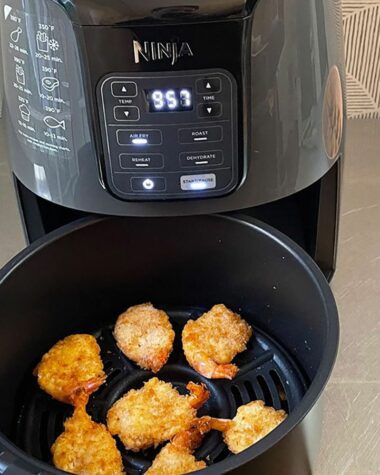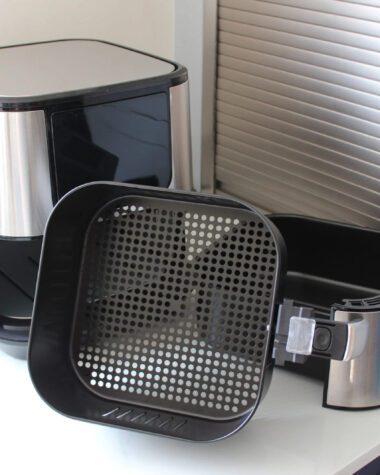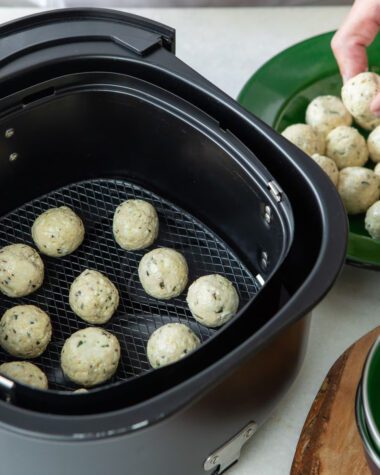As convenient and helpful dishwashers are for us, some find them difficult to understand. Many people even consider it the hardest kitchen appliance to comprehend, let alone use correctly.
How many dishes or utensils should I cram inside it? What would happen if I put these sharp knives inside? Why did the dishes come out still dirty?
In the hopes of answering all these questions and better laying out how exactly dishwashers became an integral part of any modern kitchen, we came up with this article intending to share everything you need to know about the machine.
After reading everything we have to say, you’d surely feel more comfortable with your trusty dishwasher.
Apart from dishes and kitchenware; you can use your dishwasher to clean all sorts of things
As you would expect with a machine that has the name dishwasher, it mainly cleans dishes, utensils, and other kitchenware. However, those aren’t the only things that dishwashers can wash.
In fact, some would argue that the name dishwasher itself is a misnomer as it can wash so much more than just things found in the kitchen.
Below is a list of things you can safely run through a cycle in the dishwasher and come out cleaner than ever. Of course, you wouldn’t want to run them alongside your dirty dishes – better put them on their own wash cycle to ensure everything stays sanitary.
- Baseball hats
- Bottle brushes
- Sponge holders
- Plastic toys
- Flip-flops
- Hair brushes
- Soap dispensers
- Cabinet knobs
- Refrigerator shelves
- Metal dish racks
- Metal grooming kits
- Vent covers
- Vacuum cleaner components
- Lightswitch plates
- Pet bowls
Those are just a few things you can feed your dishwasher that you wouldn’t necessarily think you could do without damaging it.
However, keep in mind that dishwashers’ main purpose will always be to clean dishes. Although you can use it for other purposes, it is better not to do so regularly.
Related Article: 17 Things You Can Put in Your Dishwasher (That You Didn’t Know)
The things that you should never put inside the dishwasher
Above, we showed you the unexpected things you can put inside your dishwasher to wash safely. However, just because there are a myriad of things that you can feed your machine safely does not mean that you can put everything in it already without incurring any damage.
Remember that dishwashers are heavy-duty cleaning machines – they can damage or destroy items. Inversely, some of these items can do the same to them.
In direct contrast to the previous entry, here are some of the things that you should never put inside the dishwasher.
- Hollow-handled knives
- Nonstick pots and pans
- Cast iron
- Antiques and other fragile items
- Stoneware and ceramics
- Crystals
- Gold-colored flatware
- Pressure cooker lids
- Milk glass
- Brass metal
- Bronze metal
- Aluminum cookware
- Wooden cutting boards or utensils
- Plasticware
- Printed measuring cups
Considering how pricey dishwashers are nowadays, of course, you wouldn’t want to damage them by foolishly putting non-dishwasher-safe items inside them. Apart from the shortlist we provided above, there are still literally a thousand other items that you shouldn’t put inside your machine.
Use your common sense, or better yet, check Google first before putting an item you think is safe for dishwashers to wash inside.
Stop pre-rinsing altogether
Pre-rinsing your dirty dishes before feeding them in your dishwasher to make them come out cleaner is a misconception.
In fact, it does the exact opposite. Ironically enough, pre-rinsing the dishes you put inside the dishwasher can make them less clean than if you hadn’t after the wash cycle.
Take note that we aren’t telling you to put your dirty dishes directly in your dishwasher after a meal. Of course, you would still need to scrape food off your dishes before loading them in. leftover food can clog the dishwasher, leading to leakages or other issues.
What we are telling you is to stop pre-rinsing altogether. Here are a few reasons why.
- Pre-rinsing makes it hard to tell when your dishwasher is full of clean dishes versus dirty ones. You could needlessly run your machine for another cycle just because you aren’t sure, resulting in more power and water consumption. Or you could end up drinking or eating from glasses or dishes that aren’t thoroughly clean yet.
- Some detergents actually need left-on food particles to work effectively. This is because the enzymes within these detergents are designed to latch onto food particles. Because pre-rinsing gets rid of them, these detergents rinses away, not making any impact on cleaning your dishes whatsoever.
- Modern dishwashers have integrated sensors that determine how much water they would use based on how dirty the dishes inside them are. Say that you pre-rinse your dishes before putting them inside the machine; they could register as already ‘clean,’ thus preventing the dishwasher from doing its job optimally.
Simply put, pre-rinsing can only lead to your dishes not coming out as clean as you think from the dishwasher.
Just make sure to remove the large food particles that may still linger on your dishes after eating, and let the dishwasher do the rest.
Related Article: 9 Dishwasher Safety Tips and Things To Avoid
Each dishwasher manufacturer has a suggested way to load and unload dishes and utensils
Contrary to popular belief, there is no universal way how you should load and unload your dishes and utensils from dishwashers.
Each dishwasher manufacturer has a suggested way to load their different dishwasher models. It is best to read your machine’s manual again to review the machine’s preferred way on how you should load or unload.
That being said, here are a few general rules on the proper ways you can load and unload your dishes to get the best result.
- Generally, dish surfaces should face toward the center of the machine. This is because the sprayer arm works from the middle out, facing dishes toward the middle ensures that they get maximum spray, thus, cleaned better.
- Do not sort your silverware as you put them inside the dishwasher. Doing so may risk the spoons and forks to nest into each other and cover up each other’s surface area. This will prevent them from getting thoroughly cleaned as the sprayer could miss the covered areas.
- When unloading, it is always best to empty your dishwasher bottom first. This way, if water has pooled on anything on the top rack, the dishes on the bottom wouldn’t get wet as you unload.
Related Article: 9 Common Mistakes You are Doing on Your Dishwasher (The Ugly Truth)
How to know if you need to get a new dishwasher already
As with every machine in this world, your dishwasher would also eventually crumble and cease to work. That said, signs that your dishwasher may be in its final stages aren’t as apparent as other appliances.
Take, for example, when your dishes come out still dirty from your dishwasher. While admittedly concerning, it does not necessarily mean that your machine is nearing its end already.
There are several reasons why your dishes may still come out dirty after a dishwasher cycle, such as improper loading, too much detergent usage, and pre-rinsing.
Nevertheless, we came up with a few viable factors below to look out for that indicate that you may already need to get a new dishwasher.
Related Article: Dishwasher 101: The Definitive Guide for Beginners
The dishes do not come out hot
Since dishwashers heat the water it uses to clean dishes more effectively and get rid of any lingering bacteria, it is only safe to assume that something is wrong with your machine once the dishes that come out of it aren’t hot.
There may be an issue already with the heating coil or electric heater inside your machine. These get your tap water super-hot to sanitize the dishes you put inside the machine.
Unfortunately, fixing or replacing them can get quite costly. You might be better off purchasing a new machine altogether.
It does not drain properly
After a wash cycle has been completed and you see a pool of water in the bottom of your dishwasher, you may want to do some investigating. Your machine may have serious problems that need addressing. And the likely culprit here is its drain.
Check whether bits of food or other debris is clogging the drain and preventing water from filtering out after the wash cycle is finished. If there aren’t any, it could be that the drain itself has crumbled or cracked. In that case, you would need to replace the whole unit altogether.
You start seeing rust
Once in a while, swipe the floor underneath your dishwasher with a light-colored cloth or paper towel. If it comes out with rust or flakes, that means water is leaking and getting into places it shouldn’t, thus damaging your machine. Sadly enough, this also means that you may want to consider getting a new dishwasher soon.
If you see rust inside the dishwasher, look to see if it is because of any of your dishes inside. Say that you determined that it is not your dishwasher itself that is the origin of the rust, you can run an empty cycle with citric acid, and that should clean the rust right away.
Related Article: Signs that Your Dishwasher is Clogged and How to Fix it
Conclusion
There you have it! After reading this article, you should now be comfortable enough to run your dishwasher how it’s supposed to be. Better yet, you now also have an idea of how to better take care of it and use it for other means. Dishwashers have grown to be an essential part of our kitchen. Getting familiar with it is imperative to maximize its use. We hope this article helped you with just that.
Would you like to know the top dishwashers this 2023? We got you covered! Follow the link and take a look at our picks.









